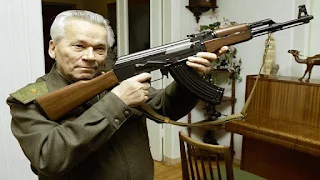On June 18, 1949, the Soviet Council of Ministers issued a decision requiring the 7.62 mm machine gun, manufactured in 1947, to begin service in the Soviet Army.
The Russian government has named the new light weapon "Aka" (7.62 mm Kalashnikov machine gun), indicating that industrial production of "Aka" in batches will be carried out in the 74th factory in the Russian city of Izhevsk.
Over time, the Kalashnikov machine gun underwent many modifications. For example, in 1954, the machine gun was developed and a light version of it was manufactured. Its weight was reduced to 3.8 kg thanks to modifications to the barrel box. This particular light model became a major weapon for the Soviet infantry.
The Kalashnikov machine gun not only became a major weapon in the Soviet army, but also in the armies of the Warsaw Pact countries. Then "Kalashnikov" captured the markets of Latin America, Africa and Asia, where its simplicity, safety, adjustability and low price are noted as the most important characteristics of the Soviet light weapon.
The Kalashnikov machine gun changed perceptions of contemporary light weapons and set new standards. The Kalashnikov, which is simple to use and cheap to produce, broke many records, and is linked to many events that changed history and the geopolitical map of the world.
"Aka" became a true legend, thanks to its designer, Mikhail Kalashnikov.
During the past 75 years, many models of military and civilian weapons with various calibres have been developed on the AKA base, including AKM machine guns, semi-automatic Saiga hunting rifles, and others.
Today, the Kalashnikov and its models are considered the most widespread light weapon in the world. More than 100 million copies were produced and entered into the possession of 106 armies in the world.





